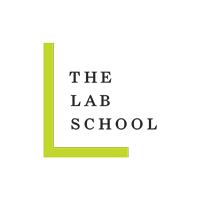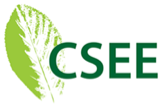

Lab Faculty and Staff
5/13/2016
What are the current theoretical models of the relationship between intelligence and creativity?
What are the connections between creativity and learning?
What links between creativity and intelligence have been identified in the research literature?
What is the relationship between executive functioning and creativity?
Can you divide a cake in eight pieces -- with just three straight cuts?
Well, of course you can.* But does figuring out how to do it rely more upon our intelligence -- or our creativity? And, what is the relationship between intelligence and creativity? You might think that, for two concepts so important to us as humans, so central to innovation, learning, discovery, and achievement, we must have developed an understanding of precisely how creativity and intelligence intersect -- and to what extent they are distinct. And yet it turns out that their relationship is far more complex and interwoven than it appears.
In an attempt to identify what the scientific community has learned about the relationship between these two important qualities, we studied how scholars and researchers have conceptualized the relationship between intelligence and creativity over the past several decades, and found ourselves landing in the middle of a fairly lively debate. It should be noted at the outset, that research in this area is constrained by the elastic and evolving nature of the definitions of the two terms in question. As two researchers put it, “the lack of clear conclusions about the nature of the creativity-intelligence relationships is due...to the dynamic yet at times underdeveloped constructs being studied.” (Kaufman & Plucker, 2011). In an effort to share what we have learned, we will review some of the concepts and theories that most illuminate the relationship between intelligence and creativity. While an overall synthesis of these theories is beyond the scope of this summary, we will highlight some of the important themes that unite these theories, as well as important questions to ask regarding any theory of creativity and intelligence.
Convergent & Divergent Thinking:
How many different uses can you come up with for a paper clip?
This is an example of a question that calls for divergent thinking. Divergent thinking is akin to brainstorming, and involves finding as many answers to a question or a problem as you can. It is an open-ended approach to problem-solving, and is appropriate for questions that do not have a ‘correct answer.’ Convergent thinking, by comparison, is involved when one is confronted by a question that generally has one correct answer and a limited number of ways to obtain that answer. ‘Find the area of the rectangle with sides of length x and y,’ is an example of a problem requiring convergent thinking.
A number of creativity theorists postulate that divergent thinking is associated with creativity, whereas convergent thinking is not. In fact, many measures of creativity have involved divergent thinking tasks, such as the paper clip example. Creativity, so the thinking goes, can be seen in divergent processes: It is unmoored from seeking correct answers, and instead seeks novel ones; it involves the production of multiple responses; and it is the prototype for thinking ‘outside the box,’ the go-to metaphor for creativity.
However, as we will see with many prominent theories of creativity, it is not that simple. Creativity certainly underlies divergent thinking tasks, but what about convergent thinking? In fact, scholars argue, some of the best advances in mathematics and the sciences --- think Einstein -- is the result of approaching questions that involve convergent thinking in new, and creative ways. Are technological advances -- such as the iPhone, or the self-driving car -- solely the result of divergent processes? Or do they involve new and different ways of applying and combining both convergent and divergent approaches? Some creativity researchers have taken this approach, referring to creative processes as the result of a ‘magic synthesis’ of convergent and divergent processes.
An Early Theoretical Approach: Sternberg
Robert Sternberg is one of the foremost researchers who have written about both intelligence and creativity. His thoughts on intelligence have evolved over time, but at the core of his thinking are three central types of intelligence, which is why it is referred to as the Triarchic Theory of Intelligence. These three components are Analytic, Contextual, and Creative. Sternberg views these three areas as overlapping components of intelligence that work in concert.
When we are confronted with familiar and abstract problems, we rely on our analytical, rational, and logical skills. The skills involved in analytic thinking are those that we use to analyze and critique information; to judge, compare, and evaluate choices or decisions; and to logically think our way through problems and challenges.
Sternberg used the term contextual intelligence to refer to the mental faculties involved when we are navigating social or interpersonal situations. These faculties involve the skills required to assess dynamic social interactions and situations, to identify and evaluate what is needed to implement a plan, and the full range of skills involved in figuring out the ‘real world’ implications and consequences for ideas or plans.
When we are confronted with novel tasks and situations, we rely on a different set of skills that he termed creative. This aspect of our intelligence is central to our ability to adapt what we learn to new contexts; to invent new technologies, new medicines, new tools; and to imagine entirely new applications, situations, or eventualities. This creative, or experiential, intelligence helps us to generalize from old to new situations, and to imagine, adapt to, and find our way through new entirely new and unexpected environments.
Evolving Conceptualizations
Sternberg’s view of creativity as one important aspect of intelligence is far from the only view, however. A number of other approaches have been proposed, with each having some evidence and support. Threshold theory, for example, postulates that intelligence and creativity are separate skills, but are moderately and positively correlated. In other words, lower intelligence predicts lower levels of creativity, and higher intelligence -- up to a certain point -- is associated with higher levels of creativity (Plucker et al., 2015). This theory has received mixed support, and recent research showing relationships between intelligence and creativity across the IQ spectrum has cast doubt on the ‘threshold effect.’
Interference theory is based upon the notion that creativity and intelligence are correlated to some degree, however, a high level of intelligence interferes with the development of creativity (Sternberg, 1996). This is the idea that, although creativity and intelligence share some important cognitive features, such as conceptual thinking and problem solving, they have important differences, such that higher levels of intelligence act to inhibit creative processes. This distinction begs the question of how and where, precisely, creativity and intelligence diverge in daily life. When we are engaged in adapting to challenging environments; creating new technologies; creating works of art; or simply managing life’s daily challenges, when does what we do represent ‘intelligence,’ when is it the manifestation of ‘creativity,’ and how do we distinguish among the two? This next section attempts to distinguish among the different types of creativity, which may be one step to helping to clarify these distinctions.
A Developmental Approach to Creativity
Innovation; problem-solving; insight. These abilities straddle the fine line between creativity and intelligence. However, one schema for classifying creativity provides an alternative perspective. Several prominent creativity researchers (Beghetto & Kaufman, 2007, 2014; Kaufman & Beghetto, 2009) have argued for a classification of creativity, based on a fluid combination of the creative process and the creative product. This approach initially involved two distinct levels of creativity. ‘Little c’ creativity refers to the everyday creativity that all individuals employ in problem solving and adaptation in the course of their work and life. ‘Big C’ creativity refers to universally acclaimed, innovative, and groundbreaking creativity, as is evident in the work of celebrated creators, such as Thomas Edison, Vincent Van Gogh, and Steven Spielberg. They have proposed two additional forms of creativity, to capture a wider range of creative processes and products. Mini-c refers to creative self-discoveries, or the proverbial ‘aha moment,’ that often provide the essential, internal infrastructure upon which creative processes are built. Finally, Pro-C refers to “expert-level creativity, which has yet to reach genius status.” Importantly, Beghetto and Kaufman propose these levels as being on a developmental continuum. Mini-c is a spontaneous insight that children have. When provided with support and feedback – particularly that provided in a classroom context that is supportive of creative thinking – mini-c can develop into everyday creative achievements, or little c.’ When students are given the opportunity to practice – such as in music, arts, or other endeavors – their skill level, and their creativity, mature. Deliberate practice, then, is one of the key ingredients necessary for little c to continue to blossom into ‘Pro-C,’ or the ability to have creativity be at the center of a professional endeavor.
This developmental theory is valuable in that it explains some of the progression of creativity across the lifespan. However, it begs the question of where creativity ends, and intelligence begins. This is, in part, because creativity “is typically viewed as a complex or syndrome that is multifaceted and varied in expression” (NEA, 2014). Part of this ‘creativity syndrome,’ then, is intimately related to intelligence. To a great extent, scholars and researchers have not been able to cleanly separate creativity and intelligence, because they are overlapping aspects of a larger, complex, and invaluable cognitive process.
Perhaps rather than trying to finely separate out creativity and intelligence, we would be better served to focus on other questions. Is creativity valued because of what it produces – or do we value creativity as a process, in and of itself? Do we want to create classrooms that support creative thinking – and if so, what might we be willing to give up in the process? Is creativity best seen in problem solving – or in problem creating? These questions, of course, defy easy answers. They point us in the direction of considering creativity as an essential human skill, as something that enables us to create --- to take something, and make it into something different, something better, something that we were unable to imagine previously. Perhaps it is this very quality – the ability to make something that was not there before – that makes creativity so difficult to identify, to define, to classify. Perhaps it is because creativity is so close to the heart of what makes us human, that it is so difficult to fit it neatly into a box. And perhaps this is exactly how it needs to be.
*Want to know how to cut that cake into eight equal pieces?
References
Beghetto, R.A. & Kaufman, J.C. (2007). Toward a broader conception of creativity: A case for mini-c creativity. Psychology of Aesthetics, Creativity, and the Arts, 1, 73-79.
Beghetto, R.A. & Kaufman, J.C. (2014). Classroom contexts for creativity. High Ability Studies, 25(1), 53-69.
Kaufman, J.C. & Beghetto, R.A. (2009). Beyond Big and Little: The Four C model of creativity. Review of General Psychology, 13(1), 1-12.
Kaufman, J.C. & Plucker, J. (2011). Creativity and intelligence. In R.J. Sternberg & S.B. Kaufman (Eds.) The Cambridge Handbook of Intelligence (pp. 771-783). New York: Cambridge.
Merrotsy, P. (2013). A note on Big-C Creativity and Little-c Creativity. Creativity Research Journal, 25(4), 474-476.
J.A. Plucker, A. Esping, J.C. Kaufman, & M.J. Avita (2015). Creativity and Intelligence. In S. G. Goldstein et al. (Eds.), Handbook of Intelligence: Evolutionary Theory, Historical Perspective, and Current Concepts. New York: Springer.
How creativity works in the brain: Insights from a Santa Fe Institute working group (Meeting, 2014). National Endowment for the Arts.
Runco, M.A. (2014). Big C, Little c Creativity as a false dichotomy: Reality is not categorical. Creativity Research Journal, 26(1), 131-132.
Sternberg, R.J. (1996). Successful Intelligence. New York: Simon & Schuster.




